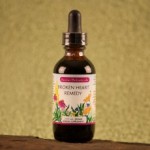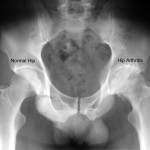Resolve to know more about the underling factors affecting conception and alternative family possibilities. * This article was originally written for the February 2015 Digital Issue of Essential Living Maine*
I had two stepmothers who were infertile for various reasons, and have an adopted baby brother. Several of my close friends and family member have used IVF to conceive, and I have my eggs cryopreserved. A few of my good friends have fostered and adopted, and others have intentionally chosen childfree lives. As lesbian and gay marriage has normalized, and divorce rates have climbed, more and more alternative families are being created using sperm banks, surrogates, egg donors, known sperm donors and more. The quest for fertility is all around us, and has been for the past 30 years in ever-increasing numbers.
The Internet has an enormous amount of information available on this topic, as the World Wide Web offers an enormous cross cultural support network for women trying to conceive (#TTC.) Infertility is usually a silent disease without any visible disability associated; however, it draws deeply on the mind/body and soul in underground ways that cannot be explained to those who do not have to undergo its trails and tribulations. Thus, the web is a great way to connect, share information, and do research while maintaining public anonymity.
 Integrative Medicine is key to enhancing fertility. Integrative Medicine combines the best of modern medicine (reproductive technology) with time-honored complementary and alternative medicines (botanical therapies, clinical nutrition, homeopathy, acupuncture, and stress management support.) The quest to get pregnant (and stay pregnant!) has been a calling of doctors and midwives since the beginning of time and across all cultures.
Integrative Medicine is key to enhancing fertility. Integrative Medicine combines the best of modern medicine (reproductive technology) with time-honored complementary and alternative medicines (botanical therapies, clinical nutrition, homeopathy, acupuncture, and stress management support.) The quest to get pregnant (and stay pregnant!) has been a calling of doctors and midwives since the beginning of time and across all cultures.
After ten years of fertility specialization, here are my Top Ten Integrative Medicine Fertility Fundamentals to know about when mapping your journey:
- First, while on oral contraceptive pills, rings, or IUD’s and for at least 6 months coming off them, it is important to supplement with a good quality multivitamin that contains at least 10-20mg of all of the B vitamins, magnesium, vitamin C, and 800mg folic acid. These are depleted by synthetic estrogens, and a deficiency can cause long term fertility issues down the road.
- If you have a family hx of miscarriage, have had a miscarriage yourself, or have any anemia or high homocysteine on lab work, you may want to test for a genetic defect called MTHFR that leads to a folic acid absorption issue. http://www.apothecarybydesign.com/blog/archives/332
- DHEA is a fat-soluble antioxidant and hormone precursor produced by the adrenal glands. DHEA is also a key player in egg health, showing improved embryo quality and higher live birth rates than controls. Studies have used 75 mg of DHEA daily. 1 DHEA supplementation also evidenced higher rates of spontaneous pregnancies in long-term poor responders to IVF in another study using 25 mg three times per day. 2 DHEA supplementation slows the aging process by preventing lipid oxidation while improving energy and metabolism.
- CoQ10 is imperative to egg health. Egg division from 46 to 23 chromosomes requires effective mitochondrial function. 3. It has been suggested that mitochondrial DNA defects that effect metabolic capacity may be a cause of failure in egg maturation, fertilization, or early embryonic development. 4. Aged eggs have decreased mitochondrial energy which can result in deficient energy to divide properly resulting in Downs’s syndrome and other genetic anomalies. All women over 30 who are still considering pregnancy should be on 100mg of ubiquinol daily to maintain efficient mitochondrial activity.
- Test your hormones early, and keep testing every few years for an objective measurement of fertility reserves. Follicle Stimulating Hormone (FSH) levels must be tested on day 3 of the menstrual cycle with Anti Mullerian Levels (AMH) levels before beginning fertility protocols. FSH reflects the relationship between the ovaries and pituitary and higher levels indicate perimenopause and poor ovarian function. Therefore, levels of FSH under 10 are best. AMH is also called the “egg timer” as it gives an accurate level of the follicular reserves of the ovaries. AMH levels do not fluctuate throughout a cycle and can be tested at any time. Serum AMH levels decline throughout ones reproductive life cycle, and are undetectable after menopause; therefore, higher levels are more desirable.
- Don’t wait too long to consider IVF. If you have been #TTC for more than 9 months and have not become pregnant with regular, timed inseminations, IUI’s or intercourse, make appointments with a fertility clinic and an Integrative fertility specialist. Having a Plan B will decrease stress, and it takes time to consider the financial and medical burdens associated with reproductive technology. However, it is worth it to have that baby in your arms! If IVF is needed, committing to the process earlier in your fertility journey can increase your chances for that #BFP (Big Fat Positive) on your first attempt.
- Don’t forget the men! At least 30% of infertility is male factor. Too often one half of the couple is doing everything possible (yoga, clean eating, no caffeine, no alcohol, meditation, support group, acupuncture, etc) while the other half is the root cause of the issue. Getting a sperm analysis is one of the first steps in a fertility evaluation, and can bypass months of angst from non-conception.
- Sperm need fertility enhancing supplements too! Omega 3 fats, 15 mg zinc, and stress busting herbs like Maca or Ashwaganda will improve sperm health, tonify libido and boost fertility.
- Have your thyroid hormones including TSH, Free T3 and Free T4 and your progesterone levels tested. Low thyroid function leads to low progesterone, which leads to frequent miscarriage in a classic vicious cycle. Some Endocrinologists and Family Docs may have conservative opinions on these levels and may use outdated reference ranges or be unwilling to test for Free T3. Consulting an Integrative Medicine Doc, Naturopathic Doctor or anti-aging Hormone Doctor may give you more information about optimizing your hormone levels rather than operating at a subclinical deficiency.
- Consider alternatives to the traditional nuclear family. There are many beautiful babies who want safe, stable, loving homes and need fostering and adoption. I know three amazing families of beautiful fostered babies! There are also women able and willing to carry babies to create families that are not their own. While a biological birth is what we are taught to dream for, this is not the answer for some. Infertility is tragic and real for people who have always assumed they would be able to birth when they are ready. Allow your self to grieve as a couple, but do not close the door on other options even if they seem inconceivable at first.
On another note, childfree living also has many blessings. Our culture is slowly shifting away from the definition of having a (nuclear) family as the ultimate success. Childfree living allows for a more relaxed and abundant lifestyle with more freedom, ability to travel, and heightened romance for a couple. We are an overpopulated planet, and I know from my life, having an auntie that is invested and involved in my life is incredibly valuable. Here are many ways to be a part of a family, and each version needs to be recognized as equally valuable and important!
I could keep typing another ten set of treatments supports, and probably another ten after that, I am so passionate about fertility! However, as I said earlier the Internet is a rich resource. Some other articles I have written on the topic include:
- A technical piece on IVF preparation https://ndnr.com/endocrinology/ivf-integrative–fertility-support/
- Ten Steps for Getting That Mothers Day Card http://thewrightdoctor.com/womens-health-2/10-steps-towards-getting-that-mothers-day-card/
- A more recent piece on fertility and Advanced Maternal Age http://thewrightdoctor.com/2014/07/12/advanced-maternal-age/
I wish each of you success on your Holy Grail of Fertility. May your journey connect you to your own Divine nature as you experience one of the great, uncontrollable mysteries of life: Conception!
References
- Addition of Dehydroepiandrosterone (DHEA) for poor-responder patients before and during IVF treatment improves the pregnancy rate: a randomized prospective study. Hum Reprod. 2010; 25(10): 2496-500Accessed September 13 2013
- Leonidas mamas, Eudoxia Mamas. Dehydroepiandrosterone supplementation in assisted reproduction: rationale and results. Current Opinion in Obstetrics and Gynecology 2009, 21:306-308.
- David Meldrum, MD. Aging gonads, glands, and gametes: immutable or partially reversible changes? Fertility and Sterility 2013; 99:1-4.
- The use of mitochondrial nutrients to improve the outcome of infertility treatment in older patients. Fertility and Sterility 2010; 93:272-5.
To book an appointment:
http://www.agemanagementcenter.com/contact-amc/ or call 207-774-1356
Clinical Practice:
www.facebook.com/AgeManagementCenter
For more information about Infertility see:
- http://www.resolve.org/infertility101 (Basic understanding of the disease of infertility.)
- http://www.resolve.org/national-infertility-awareness-week/about.html (About NIAW)







